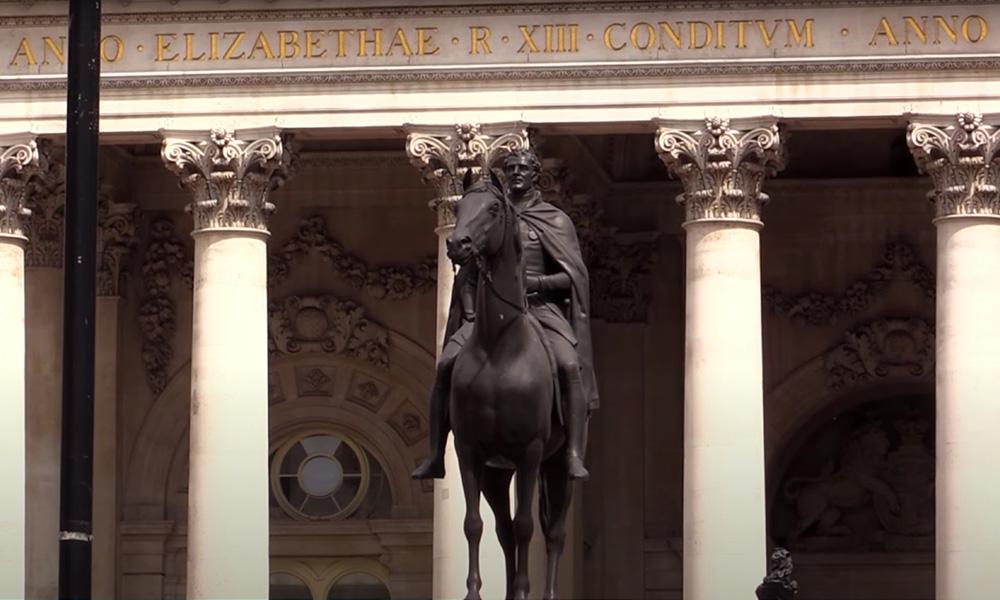The Bank of England is hawkish but dovish. What are the warning signals behind the interest rate cut?
2025-08-07 20:59:45

The Bank of England (BoE) announced a 25 basis point cut in its base rate to 4% at its latest monetary policy meeting. While this move was within market expectations, the hawkish signals released by the statement have drawn widespread attention. In particular, the newly added phrase, "With the reduction in Bank Rate, monetary policy has become less restrictive," was interpreted by the market as a cautionary tale about the current easing path, suggesting that future policy will be based on economic data rather than a pre-set pace.
This has led the market to reassess the path of future interest rate cuts. The Bank of England, originally expected to cut multiple times over the next year, has now been tightened to just one more cut this year, with expectations for cuts significantly reduced to fewer than two before next summer. Despite the initial rate cut, the central bank remains sharply divided on whether to continue easing. The Monetary Policy Committee (MPC) voted 5-4 in favor of a rate cut, highlighting a growing hawkish stance.
Inflation is highly sticky, prompting the central bank to cautiously signal easing. The caution expressed in this monetary policy statement stems primarily from concerns about the inflation outlook. Although the year-on-year CPI has fallen from its highs, it is still forecast to remain in the 3.5% to 4% range for the remainder of the year, well above the 2% policy target. This level of inflation is considered highly sticky, and if inflation expectations solidify, it will constrain monetary policy.
Of particular note, the rebound in food prices has become a significant driver of inflation, while service sector inflation and wage growth remain elevated at around 5%. This suggests that unless the labor market weakens significantly, the central bank will struggle to reach a consensus on easing. Even some members, such as newly appointed member Claire Lombardelli, who previously held a dovish stance, have shifted their stance in favor of maintaining interest rates, reflecting a shift in internal sentiment.
The labor market remains resilient, insufficient to justify aggressive easing. Despite weakening economic growth momentum in the UK and signs of cooling in some labor market indicators, overall wages remain strong, and adjustments in some sectors, such as hospitality, have yet to filter through to the broader labor market. More importantly, the peak unemployment rate is projected to be only 4.9%, still low by long-term historical standards and insufficient to justify a shift in monetary policy.
Therefore, analysts believe that the current employment situation is not enough to prompt the Bank of England to initiate a more aggressive interest rate cut cycle. This also explains the split in the Monetary Policy Committee: some members hope to maintain policy flexibility through small interest rate cuts, while others prefer to wait and see, waiting for clearer signs of an economic recession.
The inflation path remains a key variable, and a November rate cut remains possible, but the outlook is complex. Despite the Bank of England's hawkish signals, some analysts maintain their prediction of another rate cut in November, with room for up to two more cuts in 2025. This assessment assumes that current high inflation does not necessarily translate into structural inflation. Both factors that determine inflation sustainability—workers' bargaining power and businesses' pricing power—are weakening against the backdrop of a slowing job market.
Furthermore, the current CPI level is partially driven by a lagged increase in regulated prices, a factor expected to decline naturally over the next two years. However, this outlook is subject to uncertainty. If inflation data unexpectedly rises in the coming months, or if the job market stabilizes and rebounds, the central bank could revert to a hawkish stance and reassess its easing path.
Sterling's gains were limited, and the interest rate curve flattened again. Following the policy announcement, short-term UK interest rates rose rapidly, with 2-year government bond yields rising by 5 basis points and 10-year yields increasing by 2-4 basis points, creating a slight "bearish flattening" trend. Meanwhile, the GBP/USD exchange rate rebounded above 1.34, while the EUR/GBP exchange rate fell to an intraday low, reflecting the market's repricing of the UK's policy path.
A key variable currently attracting market attention is the diverging monetary policy paths of the UK and the US. The Federal Reserve may begin cutting interest rates in September, while the Bank of England is more inclined to maintain current rates. This divergence provides some short-term support for the British pound, but its medium- to long-term performance remains constrained by UK economic fundamentals and fiscal policy trends.
In particular, the core logic that previously drove the rise of EUR/GBP - that the UK will have 75 basis points of room to cut interest rates - has been weakened. In the future, the currency pair may fluctuate in the range of 0.86-0.87. If the UK interest rate is lowered to 3.5% as expected, the exchange rate pair is expected to rise to 0.88, and may be close to 0.90 in 2026.
Fiscal tightening may limit room for easing, making the policy game increasingly complex. The Monetary Policy Report also notes that future UK fiscal policy may weigh on GDP growth. Although the Bank of England has raised its economic growth forecasts to 1.75% and 2.25% for 2025 and 2026, respectively, fiscal tightening and tax increases will continue to constrain policy. If the October budget tightens further, the Bank of England will be forced to shoulder a greater responsibility for policy stimulus, potentially forcing the Bank of England to reopen its easing space.
In addition, the market had previously held certain expectations that the Bank of England would release a signal of easing its quantitative tightening (QT) policy at its September meeting, but the relevant statements in this report were relatively cautious, only pointing out that the impact of QT on the duration premium was slightly higher than expected (15-25bp), and did not release any clear adjustment signals.
Summary: Data will drive future policy, and the market needs to remain vigilant. Overall, while the Bank of England's rate cut was within expectations, the accompanying hawkish stance reinforces its data-dependent policy path. Further easing is unlikely until inflation and employment data deteriorate significantly. Traders are closely watching upcoming labor market data, particularly service sector inflation and wage growth. If these remain elevated, the Bank of England is likely to maintain a cautious stance.
In the exchange rate and interest rate markets, the British pound remains supported in the short term, but its upside potential is constrained by the UK's economic outlook and fiscal environment. Regarding interest rates, while the medium-term target is a 3.5% drop, the path will be steeper and the pace more uncertain. Traders are closely monitoring economic data and adjusting their expectations.
- Risk Warning and Disclaimer
- The market involves risk, and trading may not be suitable for all investors. This article is for reference only and does not constitute personal investment advice, nor does it take into account certain users’ specific investment objectives, financial situation, or other needs. Any investment decisions made based on this information are at your own risk.





















